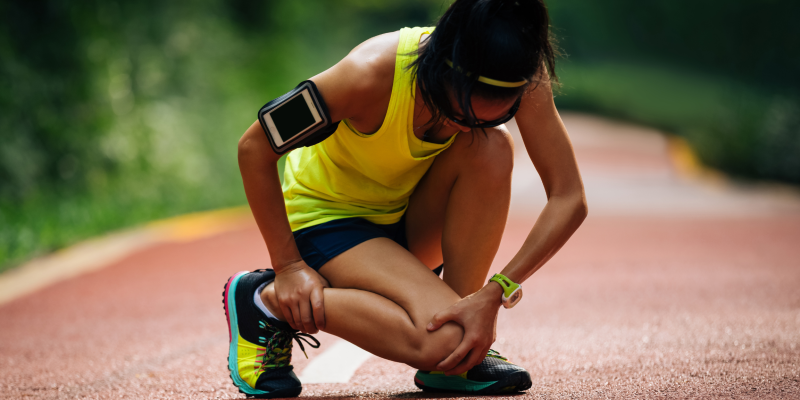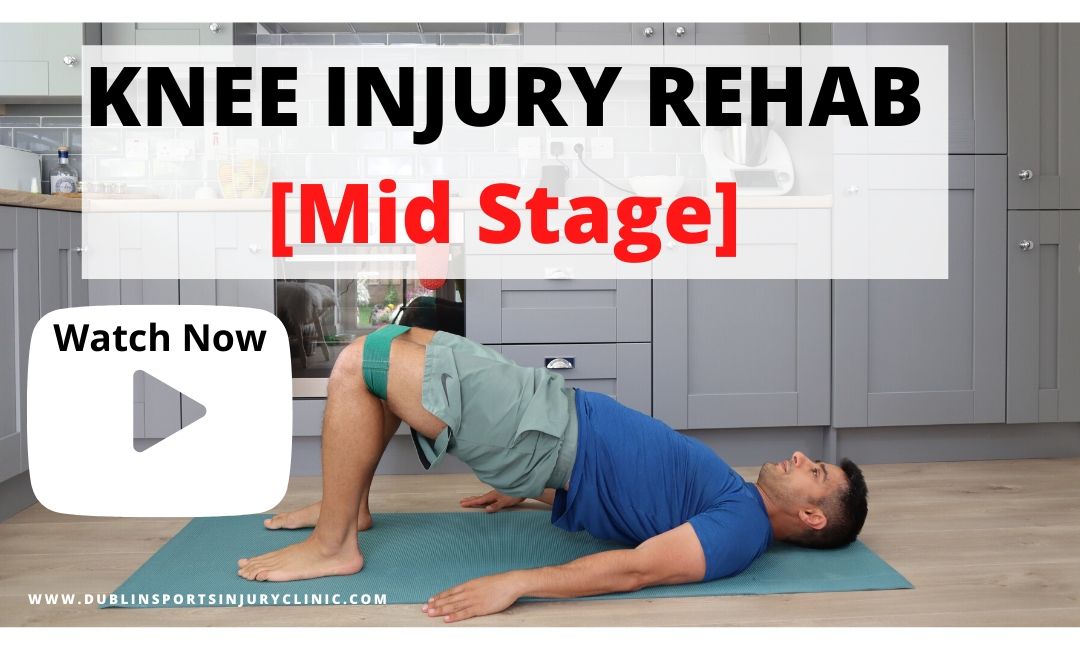The knee is one of the largest and most complex joints in the body. It is an articulation between the thigh bone (femur) and the shin bone (tibia). The smaller bone that runs alongside the tibia (fibula) and the kneecap (patella) is the other bones that make the knee joint. There are many structures that give a knee joint stability, such as muscles, ligaments and the knee capsule that cover the joint. In this post, we are going to show you the function of gluteal muscles. Also, we will discuss the link between knee injuries and gluteal muscle strength.
Gluteal muscle function
The gluteal muscles are a group of three muscles which make up the buttocks: the gluteus maximus, gluteus medius, and gluteus minimus.
The gluteus maximus muscle is the strongest muscle in the body and covers a large part of the buttock. The gluteus maximus causes the leg to straighten at the hip when a person walks, runs, or climbs. It is also used to raise the body from a sitting position. It partly covers the gluteus medius muscle, which lies over-top of the gluteus minimus.
The gluteus medius muscle is partly covered by the gluteus maximus. They move the thigh out and rotate it medially. The gluteus minimus lies beneath the gluteus medius and is its companion in attachments and functions.
The gluteus minimus muscle lies beneath the gluteus medius and is its companion in attachments and functions. Its function to move the thigh out and rotate it medially. Both muscles lie beneath the superficial and largest of the posterior thigh muscles, the gluteus maximus.
Gluteal muscle strength and knee injury
Researchers suggest that decreased strength of the gluteus medius and the gluteus maximus muscles contributes to the etiology of various orthopedic pathologies of the knee. In particular, the gluteus medius and gluteus maximus are thought to eccentrically control our femoral (thigh bone) internal rotation and hip adduction movements during functional activities. They also highlighted, the weakness of posterior lateral gluteal musculature has been reported to contribute to the etiology of various orthopedic pathologies of the knee, such as patellofemoral pain syndrome or knee arthritis.
In addition, research highlighted, (Gluteus medius) weakness and decreased muscle activity cause adduction and internal rotation in the hip joint during weight-bearing while walking. This increases the Q-angle causes genu valgum and moves the patella to the lateral side to increase the valgus vector (cause sore knee). ( Read more).
in relation to exercise rehabilitation a study by Shields et al, states that rehabilitation regimens that use closed chain weight-bearing (WB) exercises are preferred because they better mimic functional movements (Read more).
In this post, we have prepared 3 closed chain weight-bearing exercises to activate your gluteal muscle as part of your exercise routine.
1- Glute Bridges
Lie on the floor with your knees bent and feet flat on the floor. Push your hips into the air using your buttocks muscles and keep your back straight and in alignment with your hips. Avoid arching your back. Squeeze glutes and lift hips towards the ceiling. You may try this exercise for 3 sets of 10 to 15 reps.
2- Crab Walk
You may start this exercise without the resistance band initially and progress it with a resistance band. Double up a resistance band and step into it, so it’s wrapped around your toes. Keep your legs shoulder-width apart and sink into a half squat. Sidewalk to the left for a couple of steps, then change direction. You may try this exercise for 3 to for sets.
3- Single leg squat
Stand on the step with arms extended out in front. The balance on one leg with the opposite leg relaxed next to the steps toes upward. Squat down as far as possible while keeping the other foot off of the floor. Raise the body back up to the original position. You may try this exercise for 3 sets of 10 repetitions and switch leg. While doing this exercise focus on your balance and avoid knee valgus movement > < (moving inward).
Our Approach
Dublin Sports Injury Clinic is a physical therapy clinic based in Fitzwilliam Square, Dublin2. We have a holistic approach to our assessment and treatment. The initial assessment helps us to explore the mechanism of your injury (fall, twist, tackled, etc) and help you to get you pain-free shortly. We will prescribe relative rest or modified activities if you needed. As a part of your treatment, we will educate you regarding the Risk Factors and we show you the current research studies. We design a customized training program to start you with and we will coach you closely step by step. In addition, we design a preventive rehabilitation program for you to minimize re-injury occurrence.
Next step
Want to get in touch with our team of a therapist or you are looking for some advice? Simply fill in your details below & we get in touch with you shortly.
FOLLOW US ON YOUTUBE AND GET ACCESS TO OUR WEEKLY FREE REHABILITATION EXERCISES.
Disclaimer: This article is for information only and should not be used for the diagnosis or treatment of medical conditions. You can contact us if you would like to book an appointment or get some advice from our therapist.


